EN / PL
The manor house from Mirogonowice is one of the finest buildings recently acquired by the open-air museum. It is a reconstruction of a country manor house erected in the eighteenth century. It represents a characteristic type of a nobility residence, with a simple, symmetrical architectural layout, the central hallway and the drawing room.
Thanks to the co-financing from the Ministry of Culture and National Heritage under the Cultural Heritage Programme, Priority: Support for Museum Activities, the transfer of polychrome paintings from the original manor from Mirogonowice, from 1984 on storage at the Kielce Village Museum, was made possible.
The artist who painted the polychromy has not been ultimately identified, though the echoes of the works by V. Brenna (Natolin, 1780), J. Plersch (the White House in Łazienki, A. Smuglewicz (Lewków, ca. 1800) may be retraced. In one of the polychrome details, the signature of the painter may be seen, of which his first name “Józef” is legible. The polychrome paintings adorn the walls and ceilings of five first-floor rooms: the Philosophers’ Room (library), the drawing room, the dining room, the bedroom and the Turkish Room.
The polychromy consists of 102 pieces of a total area: 152.76 m2. Before conservation condition of some surviving paintings was rather poor. In most cases, delamination, cracking and weakening of the painted surface were visible in all elements. Bleaching, flaking and peeling fragments were also seen here and there. All elements were covered with dust and dirt. Many of the paintings were indistinct due to numerous missing parts.
The transferred elements were hung on the walls of the first and partly the second floors. The polychromy was protected against further damage and its historical elements preserved. Harmonised colours were applied on the whole polychromy with a conservation retouch in the missing parts.
Polychromies are in the trompe l’oeil painting technique with numerous allusions to the ancient times. Baroque heating stoves and chimneys have been also reconstructed in the manor’s rooms.
The Manor from Mirogonowice houses the offices of the Kielce Village Museum.

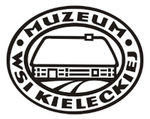
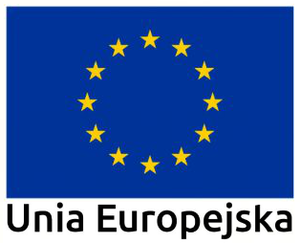
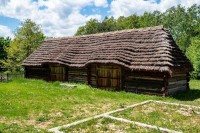
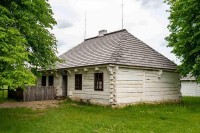
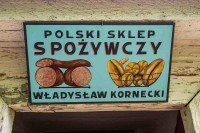
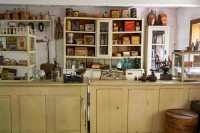
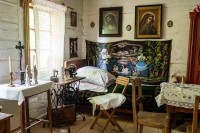
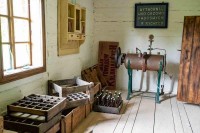
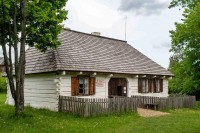
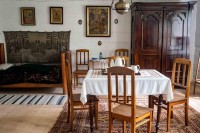
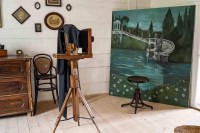
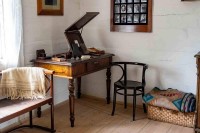
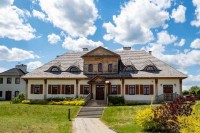
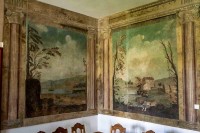
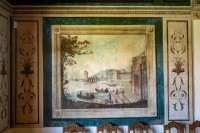
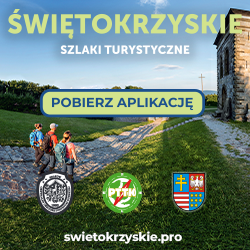
 Zakup współfinansowany ze środków Unii Europejskiej w ramach Europejskiego Funduszu Rozwoju Regionalnego na lata 2014 – 2020
Zakup współfinansowany ze środków Unii Europejskiej w ramach Europejskiego Funduszu Rozwoju Regionalnego na lata 2014 – 2020